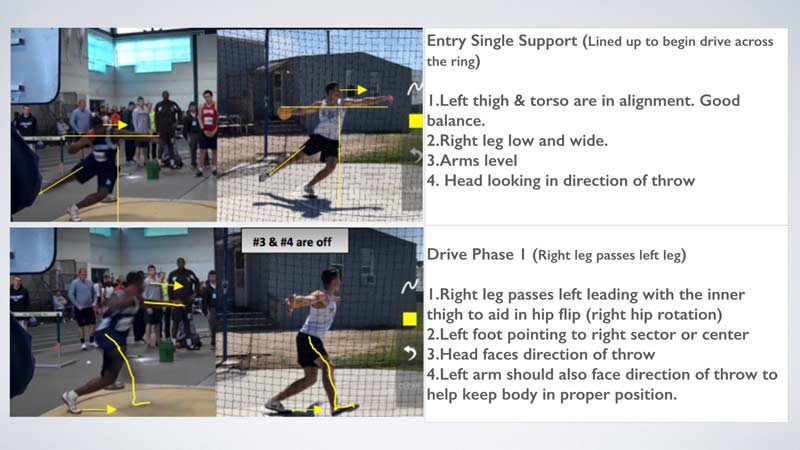4throws - Truths
4throws - Truths
Blog Article
The Best Guide To 4throws
Table of Contents4throws Things To Know Before You Get ThisGet This Report about 4throwsThe Of 4throwsThe Main Principles Of 4throws Fascination About 4throws
If not, the young pitchers may be more probable to have arm joint and shoulder injuries. It prevails for an instructor to "obtain" a bottle when the optimum number of pitches has been thrown or if the game situation asks for an adjustment. If the bottle proceeds to play in that game, he should be placed at shortstop or third base where long hard tosses are needed on an already exhausted arm.This combination causes also lots of throws and enhances their risk of injury - Shotput. The best place is transferring to second or 1st base where the throws are much shorter and much less tension is put on the arm. It is additionally crucial to understand how much time to relax young pitchers in order to permit the most effective recovery in between trips
Pitchers ought to additionally ice their shoulders and elbows for 20 mins after throwing to promote recuperation. Body and arm tiredness adjustment auto mechanics and lead to injury.
Anybody can toss a ball "over-hand," however not every person can do it well. While throwing a round appears basic, it is in fact a complicated collection of movements. Precise throwing with force or speed calls for the whole body and not just the shoulder and arm. Every component of the bone and joint system is literally included.
The Only Guide for 4throws

(https://www.find-us-here.com/businesses/4Throws-Miami-Florida-USA/34200907/)The shoulder joint is made up of three bones, scapulae, clavicle and humerus. The head of the humerus hinges on the Glenoid fossa of the scapula where it expresses when the muscle mass of the shoulder contract to relocate the arm. The head is held "against" the glenoid surface area by means of the four Potter's wheel Cuff (RTC) muscle mass, which act in unison and develop a force pair when the arm is moved.
The more the shoulder can be on the surface rotated while it is abducted, the better the sphere can be tossed with force and rate, giving all various other body parts and activities are in synch. If any kind of element of these technicians is "off," an injury can happen to the shoulder or elbow that can cause the inability to toss a ball.
It is the start of the throwing movement, preparing the "body components" for the act of throwing a round. Motion happens in the reduced extremities and torso where the huge majority of "power" to throw a round is generated. Javelins. In this stage, the shoulder musculature is minimally active. This stage prepares the arm to be able to toss the ball.
Getting My 4throws To Work
This shoulder setting places the anterior upper quadrant musculature on a "stretch" and prepares it to acquire powerfully when the arm starts to relocate onward in the following stage of the tossing activity. The body starts to progress in the direction of its target throughout this stage. The lead shoulder is routed at the target and the tossing arm remains to relocate right into severe outside rotation.

When the round is launched, the posterior quadrant musculature begins to acquire eccentrically and strongly to reduce down and control the rotational speed of the Humeral head. In theory, if the eccentric control of the Humeral head did not happen the arm would certainly proceed to rotate internally and "spin" unmanageable.
Indicators on 4throws You Should Know
The quantity of eccentric contractile force that happens can damage the posterior musculature if they are not educated effectively. The last phase of tossing is the follow-through. This stage reduces hop over to here all body motions and stops the forward motion of the body. The body comes to rest, and the muscle task returns to a quiet state.
Throwing a round "over-hand" includes movement in all components of the body. If the auto mechanics are performed effectively, the round can be thrown with great rate and accuracy. If the body is educated properly, the act of throwing can be done repetitively without creating an injury to the throwing shoulder.

Paul Whatley, M.D. "When I was a child, baseball was just in the springtime and early summer, so kids had lots of time to recoup from any concerns connected to repetitive activities and stress and anxiety," he claims. "Now, in order to keep up with everyone else, there is extreme stress for players to go from the springtime period directly right into summer season 'All-Star' competitions and showcases, adhered to by 'Autumn Ball.' Consequently, there can be really little time for the body to recuperate from a sport where rep is the crucial to establishing the muscle memory for success.
Not known Facts About 4throws
When this movement is carried out over and over at a high price of speed, it places significant tension on the development areas of the elbow joint and the physiological structure of the shoulder, particularly in the late cocking and follow-through stages. Because of this, a few of one of the most common injuries seen in baseball players influence the shoulder and elbow.
Report this page